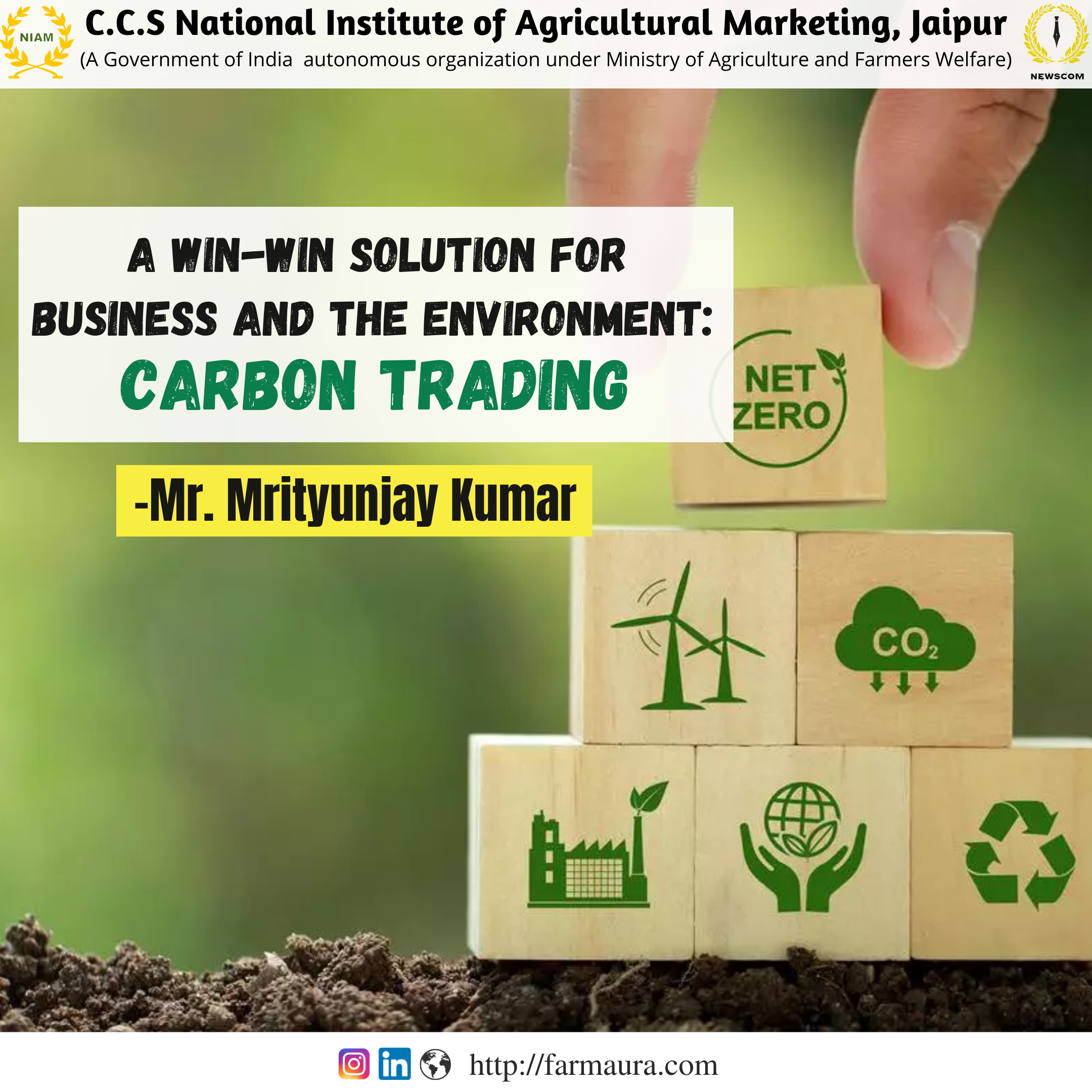Mulching is a very important aspect of agriculture. It has been used by farmers for ages because of the multiple benefits it offers, though the material & process has evolved.
Mulching is the process of applying a material to the surface of the soil to conserve soil moisture, prevent the growth of weeds, conserve nutrients, maintain soil temperature, and reduce soil erosion, etc.
There are various types of mulches being used nowadays:
- Wood Chips, Paddy Straw & Dried leaves
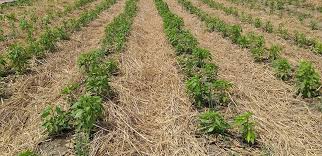
This is the most readily available & cheap kind of mulch. It comes in the category of Organic mulch & is quite convenient to obtain. After degradation, it enhances soil fertility. The straw layer should be kept fluffy to let air & rainwater to percolate.
2. Plastic Mulch
These come in a variety of shades and grades. To broadly classify Plastic mulch based on the nature of the material, they can be of two types:
a. PE mulch
These are the conventional Polyethylene mulch. Low-density polyethylene (PE) is the most commonly used plastic mulch because it is inexpensive, easily processed, highly durable, and flexible. But these have to be removed from time to time & their disposal is a major concern.
b. Biodegradable Plastic Mulch
The drawbacks of PE mulch led to the quest for a more environmentally sustainable option which paved the way for Biodegradable Plastic Mulch (BPM). Unlike PE films, which need to be removed after use, BDMs are tilled into the soil where they are expected to biodegrade.
BDMs can be prepared from biobased polymers derived from microbes or plants, or fossil-sourced materials. Common biobased polymers include polylactic acid (PLA), starch & cellulose. Fossil-sourced polyesters include poly (butylene succinate) (PBS) & poly (butylene succinate-co-adipate) (PBSA), etc.
Many researches have been made to study the impact of plastic mulches on soil microclimate, carbon accumulation & soil microbial activity. In the short run, BPMs don’t have any negative effect but in the long run, nothing can be said as the result are acute for some seasons only.
Based on colour of plastic mulch/BPM:
a. Black plastic mulch
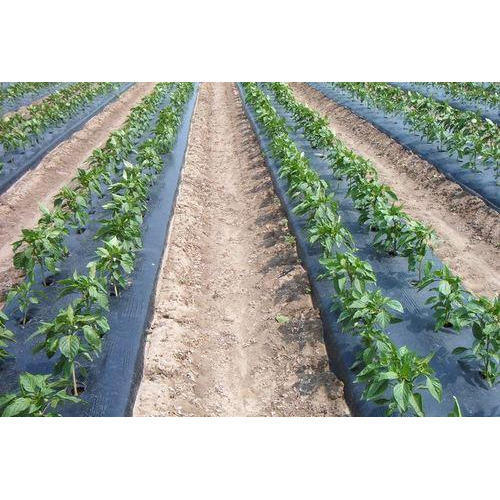
Black plastic mulch warms the soil & radiates heat during the night, maintaining temperature for heat-loving plants like eggplant & cherry tomatoes. It creates a micro-climate about 3 degrees warmer than unmulched garden.
This mulch absorbs light of all wavelength & radiates long-wavelength radiation. As both the faces of mulch i.e., upward & inward-facing radiate, a lot of absorbed energy is lost in the atmosphere. But, if mulch is in thorough contact with soil then a great fraction is transmitted to soil because the soil has higher thermal conductivity than air.
Infrared Transmitting (IRT) Plastics cost more than standard black plastic but they can result in higher yields.
b. White plastic mulch
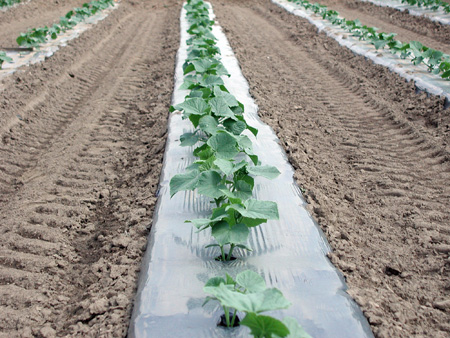
In hot areas, white plastic is often used to reduce otherwise-excessive soil temperatures. They reduce the temperature by about 2 degrees by reflecting incoming solar radiation to plant canopy.
c. Silver black mulch

Wavelength selective films also called 2 side colored mulches absorb specific wavelengths that change the spectrum of radiation entering the film and being radiated to the plant canopy. These light changes have a marked effect on plant growth, development & yield.
Silver mulch keeps aphids, whiteflies & cucumber beetles away from crops. It also creates a cooler soil temperature. So, crops like potatoes are suitable.
d. Red-colored plastic mulch
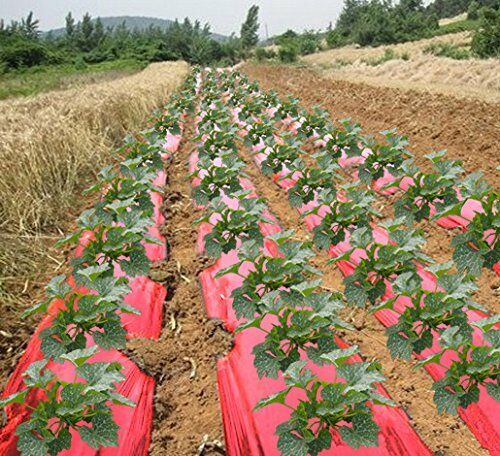
This works much better for some crops. For example, tomatoes in some studies yielded 20 percent more fruit, and strawberries grown on red plastic mulch were sweeter and had a better fragrance.
e. Transparent/ Clear mulch
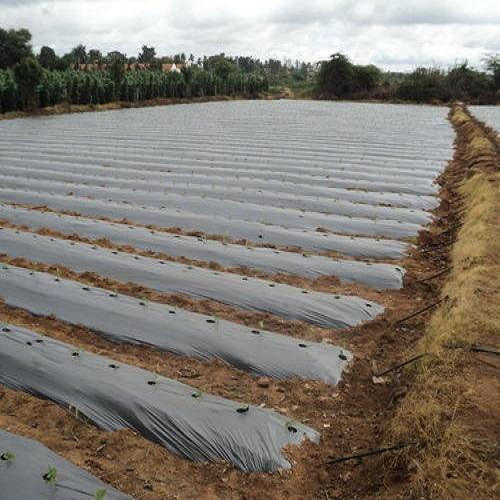
It passes all the little radiation it absorbs. The underside is generally covered with condensed water droplets.
Similarly, there are other colored plastic mulches specifically suitable for certain conditions & certain crops.
The thickness of the mulch sheet also varies as per crop type and growing cycle. For vegetable crops generally, 25 microns is used. For fruit orchards, around 100 microns.
Drip Irrigation should be preferred in mulched fields. The pipes are placed beneath the mulch sheet. Fertigation can be done by drip. After covering soil with sheet, holes are made to transplant seedlings.
Mulching increases the yield significantly and also reduces weeds, so it should be practiced as per the convenience of farmers whether organic mulching or plastic mulching.



